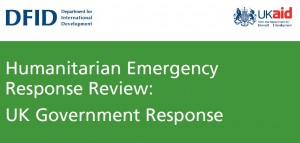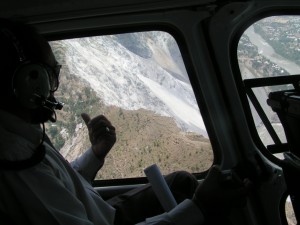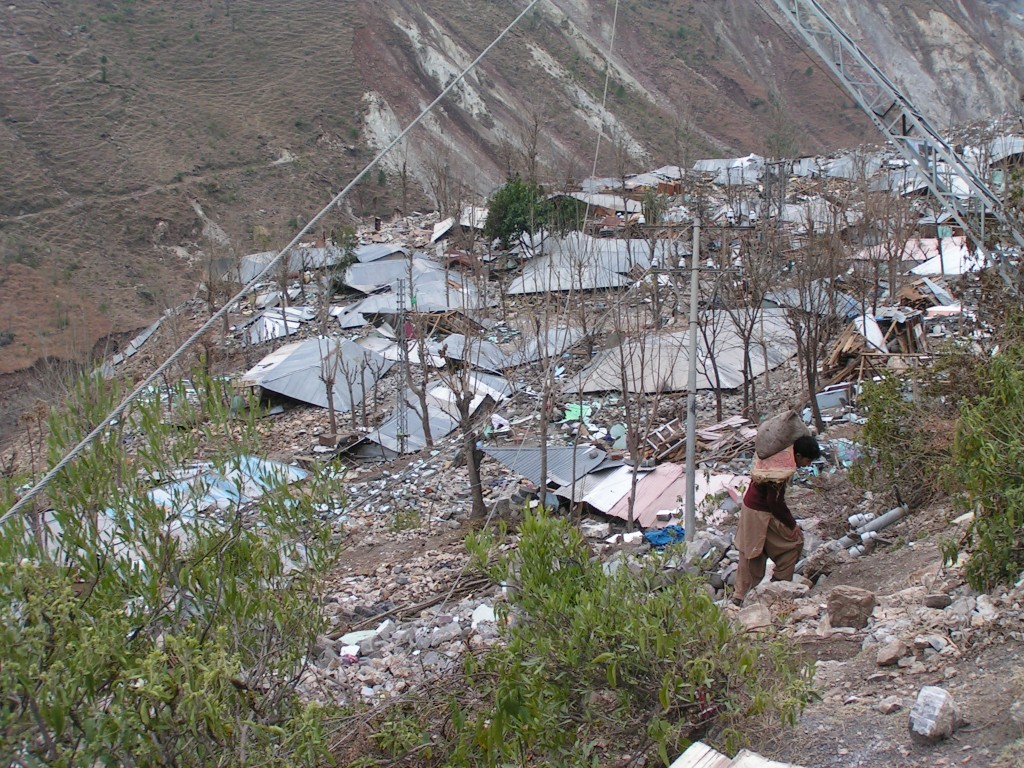16 June 2011
Responding effectively to disasters
Posted by Dave Petley
 At the start of its term a little over a year ago, the new UK government commissioned a review by Lord Ashdown into the UK’s response to humanitarian disasters, with a strong emphasis on those associated with natural hazards (especially earthquakes, floods and tropical cyclones). A few months ago the review team produced what is a surprisingly sensible and logical document (NB pdf), which addressed many of the concerns that those of us who work in this area have long felt. Yesterday, the UK Government produced its response, which is outlined in detail here (NB pdf), although the top level summary is more digestible.
At the start of its term a little over a year ago, the new UK government commissioned a review by Lord Ashdown into the UK’s response to humanitarian disasters, with a strong emphasis on those associated with natural hazards (especially earthquakes, floods and tropical cyclones). A few months ago the review team produced what is a surprisingly sensible and logical document (NB pdf), which addressed many of the concerns that those of us who work in this area have long felt. Yesterday, the UK Government produced its response, which is outlined in detail here (NB pdf), although the top level summary is more digestible.
I am pleased to say that there is much to applaud here – indeed, in my opinion this is a key step forward. I am not going to discuss every aspect of the report, but thought that I’d highlight soe of the most interesting points:
1. There is a commitment to using science to predict and prepare for disasters
 This is a very promising step forward. There has been an immense amount of frustration in the science community that we can see disasters coming, but no-one listens. This operates on multiple temporal timescales, from anticipation of a potential devastating earthquake in Nepal to a recognition that the flood waves travelling down the Indus were likely to cause mass flooding downstream. There is an emphasis on slow onset disasters too (e.g. drought).
This is a very promising step forward. There has been an immense amount of frustration in the science community that we can see disasters coming, but no-one listens. This operates on multiple temporal timescales, from anticipation of a potential devastating earthquake in Nepal to a recognition that the flood waves travelling down the Indus were likely to cause mass flooding downstream. There is an emphasis on slow onset disasters too (e.g. drought).
Of course the devil will be in the detail – i.e. how will the government join up organisations like the Department for International Development (DfID) and the science and practitioner communities? There is the opportunity to set up for example regional and/or event specific groups of scientists and civil servants to provide this input, perhaps making use of social networking technologies to streamline the process.
2. Resilience is a key theme
The term resilience means different things to different people, but it has been deeply frustrating to watch development programmes proceeding without adequate consideration of the development of communities that are able to cope with and rebound from shocks. Indeed, often aid agency funded development work appears to render communities less rather than more resilient. The increased occurrence of devastating landslides as a result of road building in Nepal is a key example. Thus, the intention of embedding resilience at the core of the work of DfID is very welcome, and the tangible process of developing regional resilience plans is an important step along the way.
3. Innovation is encouraged
For me perhaps the most startling statement in the document is that DfID will “make humanitarian research and innovation a core part of DFID research and evidence work”. This is startling because it is obvious that this should be the case – in other words, did this really not happen before? Anyway, it is pleasing to see a commitment in this direction. There are many innovative approaches and technologies that can greatly assist in the understanding of disasters, and in delivery of an effective response. This will require thinking outside the normal boundaries – I continue to be hugely impressed by the crowd-sourced work that we undertaken to map building damage in the aftermath of the Haiti earthquake, and on a different scale I undertook my own analysis of damage to the dockyard facilities at Port-au-Prince. DfID should aim to create networks that allow such things to occur – it is an extraordinarily efficient and effective way to work.
4. Search and rescue or surgical and scientific capability?
 Hidden away on page 18 of the report is a very interesting section, which says that the UK Government will:
Hidden away on page 18 of the report is a very interesting section, which says that the UK Government will:
Develop and deploy niche capabilities, focusing on UK added value, and widen the ‘tools’ in our direct response ‘toolbox’ to:
- Retain the capability to deploy search and rescue, but limit this to where we can genuinely add value; and
- Complement this with other key areas of UK excellence such as surgical or scientific capability.
This is very brave but absolutely right. In the aftermath of an earthquake there is often a scramble to deploy Search and Rescue teams into the affected area, and then huge media coverage of their miraculous rescues. There is little doubt that they do save lives, and no-one can or should question the commitment and integrity of these very brave people. However, in the cold light of day one should ask about the most effective deployment of resources when spaces on aircraft and ground support facilities are limited. The reality is that almost all rescues are carried out by local people in the first few hours after a disaster. Key choke points in the development of assistance often lie in the availability of surgical teams; in the provision of water; in the distribution of food and medicines; in the availability of shelter; and suchlike. Often the help that is needed is very specialist – for example, assistance to army teams in reopening roads blocked by landslides so that access to devastated areas can be provided.
So, this statement that there will be a much more nuanced response in which Search and Rescue teams are deployed when there is a real purpose, but that other types of response will be provided when appropriate, is really very welcome indeed. Again, there will be a need to ensure that the capability is in place well before the disaster occurs, it will be interesting to see how this is achieved. Inevitably there will be a need to think carefully about much more effective use of the military in this situation (the armed forces remain best placed to support this sort of operation); to date we have greatly underused their capabilities.
Conclusion
So, overall this seems like a very positive way forward. The key is going to be to translate this into something meaningful and effective, which will have substantial challenges. A great deal of work is going to be needed to prepare for the types of response described in the document. However, DfID do now seem to understand that there is a community of people out there ready and able to provide help, and that technologies and new ways of working now make this possible. There could be some exciting times ahead!


 Dave Petley is the Vice-Chancellor of the University of Hull in the United Kingdom. His blog provides commentary and analysis of landslide events occurring worldwide, including the landslides themselves, latest research, and conferences and meetings.
Dave Petley is the Vice-Chancellor of the University of Hull in the United Kingdom. His blog provides commentary and analysis of landslide events occurring worldwide, including the landslides themselves, latest research, and conferences and meetings.
[…] This post is mirrored from Dave Petley’s Landslide Blog. […]
I visited your blog based on the fact that we are both County Durham bloggers. I’m not sure there are mny more of us. I found this post interesting, and having a very positive slant. I think that as a personal development blogger, I would sy to you that once our purpose is fixed then we can have a laser like focus and move things forward. It seems this report has identified the purose, so the rest will follow
[…] few months ago I featured the UK Government’s response to the Ashdown report, which sought to review the ways that Britain provides assistance to both […]
[…] few months ago I featured the UK Government’s response to the Ashdown report, which sought to review the ways that Britain provides assistance to both […]